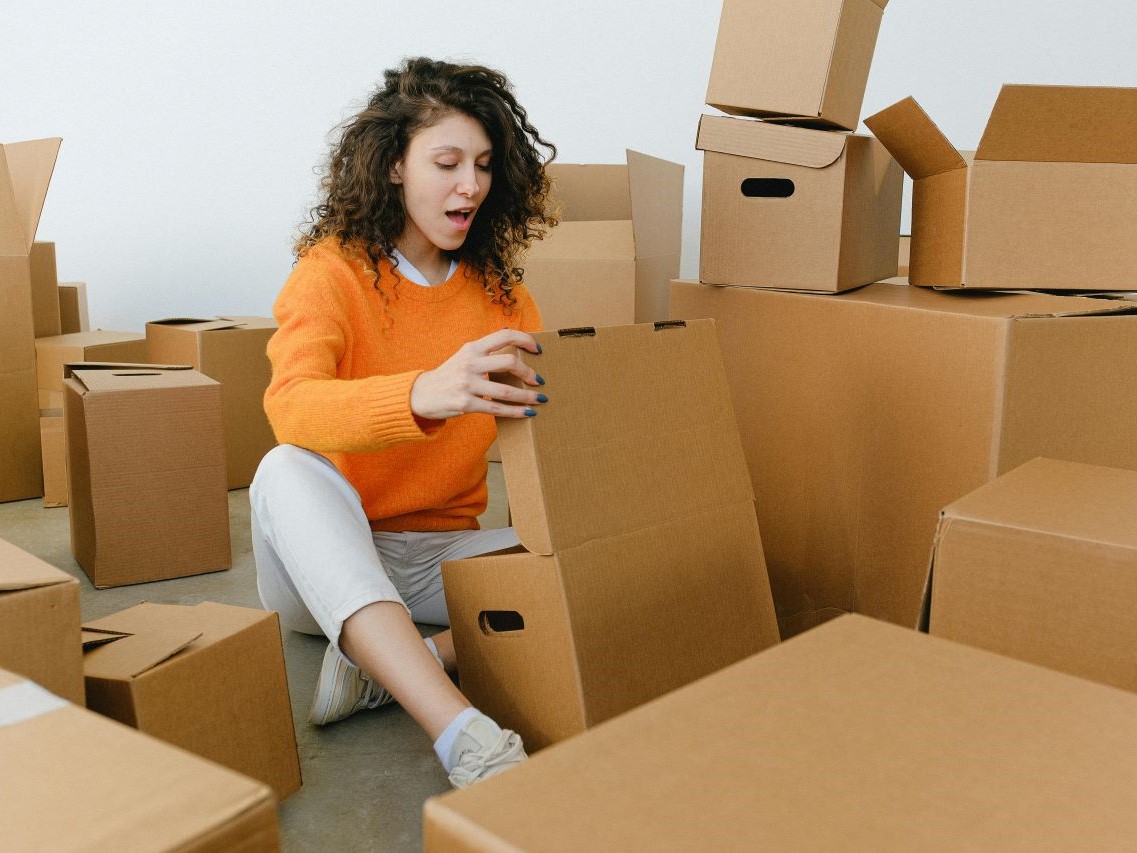Moving into your first apartment is such an exciting milestone! It’s your first real taste of independence, decorating your own space, and finally not having to share a bathroom (hopefully). But as thrilling as it is, getting your finances in order for this big step can feel a little overwhelming.
If you’re wondering how to handle all those new expenses without draining your bank account, you’re in the right place! Today, I’m walking you through how to budget to move to your first apartment with practical, stress-free tips. Let’s make this move as smooth (and affordable) as possible!
Table of Contents
Step 1: Know What You Can Afford
The first rule of budgeting to move to your first apartment is figuring out how much you can actually afford to spend each month.
1. Follow the 30% Rule
A common guideline is to spend no more than 30% of your monthly income on rent. For example:
- If you make $3,000 a month, aim for rent around $900.
This rule isn’t set in stone, but it’s a good starting point. Remember, you’ll have other expenses like utilities, groceries, and maybe a Netflix subscription (because priorities, right?).
2. Factor in All Apartment-Related Costs
When you’re budgeting, don’t just look at the rent price. Consider these additional costs:
- Utilities (electricity, water, gas, internet): $100–$200/month
- Renter’s Insurance: $15–$30/month
- Parking Fees (if not included): $50–$150/month
- HOA Fees (for some apartments): Variable
💡 Pro Tip: Ask the landlord what’s included in rent. Some apartments cover utilities or offer free parking, which can save you a lot!
Step 2: Save for Move-In Costs
Moving into your first apartment isn’t just about monthly rent—you’ll also have some up-front expenses.
1. Security Deposit
Most landlords require a deposit equal to one month’s rent. This is refundable, but you’ll need to budget for it up front.
2. First and Last Month’s Rent
Some leases require both first and last month’s rent at signing. If rent is $900, that’s $1,800 you’ll need right away.
3. Moving Costs
Whether you’re renting a U-Haul, hiring movers, or bribing friends with pizza, moving costs add up! Plan for:
- Truck rental: $50–$200
- Movers: $200–$500
- Packing supplies: $50–$100
Step 3: Budget for Furnishing Your Apartment
Furnishing your first apartment can be super fun—but also expensive if you’re not careful. Here’s how to furnish your space without breaking the bank:
1. Start with the Basics
You don’t need to deck out your apartment on day one. Focus on essentials first:
- Bed and mattress
- Table and chairs
- Basic kitchen supplies (pots, pans, dishes)
- Couch or seating
💡 Pro Tip: Check out thrift stores, Facebook Marketplace, or IKEA for affordable options.
2. Budget for Extras Over Time
Once you’ve covered the essentials, you can slowly add items like:
- Rugs and curtains
- Decor (plants, artwork, throw pillows)
- Storage solutions (shelves, bins)
Step 4: Create Your First Apartment Budget
Now that you’ve got a handle on the costs, it’s time to create a budget to stay on track. Here’s how:
1. List Your Monthly Expenses
Include every recurring cost, like:
- Rent: $900
- Utilities: $150
- Groceries: $300
- Transportation (gas, public transit): $100
- Subscriptions (Spotify, Netflix): $30
2. Add a Savings Category
Even on a tight budget, set aside something for savings. Aim for at least 10% of your income if you can.
3. Factor in Fun Money
You don’t have to cut out all the fun! Budget a small amount for dining out, entertainment, or treating yourself.
Step 5: Cut Costs Where You Can
If your budget feels a little tight, here are some tips to save money:
1. Get a Roommate
Sharing rent and utilities with a roommate can cut your costs in half. Just make sure you’re on the same page about bills, cleaning, and Netflix passwords!
2. Choose an Affordable Area
Living in a trendy neighborhood might sound great, but it usually comes with higher rent. Look for up-and-coming areas or apartments a little farther from the city center.
3. Cook at Home
Eating out adds up quickly! Save money by meal-prepping and cooking at home.
Step 6: Plan for Unexpected Expenses
Life happens, and it’s important to budget for surprises. Create an emergency fund to cover unexpected costs like:
- Medical bills
- Car repairs
- Broken appliances
Start small—$500 is a great first goal—and build from there.
Step 7: Use Budgeting Tools to Stay on Track
Managing all these expenses can feel overwhelming, but budgeting tools make it so much easier. Here are some of my favorites:
- Mint: Tracks your income, expenses, and savings in one place.
- YNAB (You Need a Budget): Perfect for zero-based budgeting fans.
- Excel or Google Sheets: Simple and customizable if you prefer a DIY approach. You can download one for free here!
Sample First Apartment Budget
Here’s an example of what your budget might look like:
| Category | Monthly Amount |
| Rent | $900 |
| Utilities | $150 |
| Groceries | $300 |
| Transportation | $100 |
| Renter’s Insurance | $25 |
| Fun Money | $100 |
| Savings | $150 |
| Miscellaneous | $75 |
| Total | $1,800 |
💡 Goal: Keep your total expenses below your income to avoid overspending.
Final Thoughts
Moving into your first apartment is such an exciting time, but it’s important to plan ahead so you can enjoy your new space without stressing about money. By knowing what to expect, setting a budget, and sticking to it, you’ll be able to settle into your first apartment with confidence. So, what are you most excited about for your first apartment? Let me know in the comments—I’d love to hear all about it!



